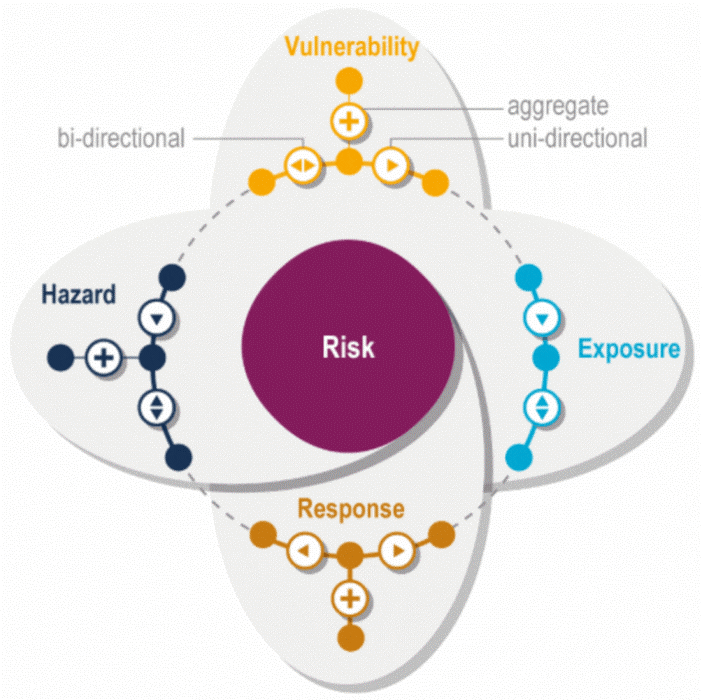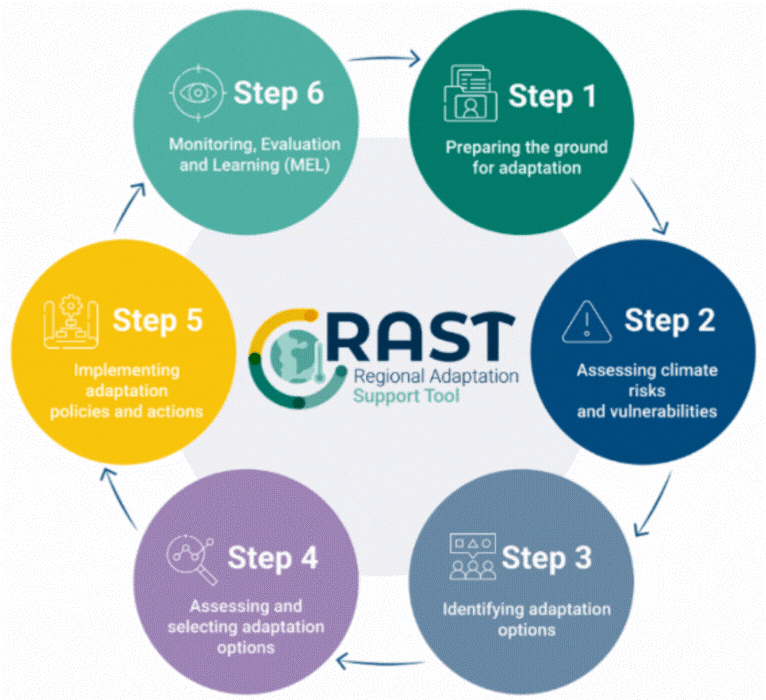
Adaptation is no longer an optional add-on to climate strategy. While mitigation continues to dominate global investment flows, the increasing scale and frequency of heatwaves, floods, and other extreme events is forcing a parallel shift toward resilience.
Cera Slevin
However, there is currently no consensus on how to value adaptation and only recently has a classification system been developed. Many reporting frameworks and taxonomies call for a climate risk and vulnerability assessment, but they don’t get beyond the risk assessment and into the adaptation options and how to value them.
Governments, financial institutions, and businesses — particularly in sectors with high physical risk exposure like transport, energy, and manufacturing — are now being asked: What is the value of adaptation for their enterprise?
This is a crucial question for underwriters, lenders, regulators, and investors seeking to assess climate-related financial risks. Unlike emissions reductions, adaptation measures are often location-specific, qualitative, and lacking standardized indicators.
Yet, the financial sector’s ability to systematically evaluate adaptation will define future risk pricing, capital allocation, and ultimately, climate resilience.
What Is Adaptation?
Adaptation is distinct from mitigation, which tackles the causes of climate change by reducing greenhouse gas emissions, while adaptation addresses its effects by making systems and communities more resilient to climate impacts.
Adaptation includes physical measures like flood defenses, process changes such as supply chain diversification, and institutional shifts such as early warning systems or regulatory reforms. Two key differences between adaptation and mitigation are:
- Adaptation focuses on the impact and not the cause: Adaptation measures deal with managing the potential consequences of a changing climate, such as sea level rise, rather than trying to stop it from happening.
- Location specific: Adaptation measures are tailored to local climate risks, such as a sea wall for a coastal town, or a company-tailored response plan for high temperature conditions.
Mitigation and adaptation share some traits:
- Public-good characteristics: Adaptation often benefits many actors at once by prioritizing the safeguarding of infrastructure, health and ecosystems, creating limited private incentives to adapt. Mitigation also has widespread benefits; for example, mass adoption of renewable energy will reduce greenhouse gases globally.
- Uncertain baselines: Estimating avoided losses in the future requires long-term climate modeling with considerable uncertainty.
- Data limitations: Adaptation is highly context-specific, yet many regions lack local climate risk baseline data and the modeling of the impact of future scenarios.
Reducing the risk can involve differing types of actions including reducing exposure or sensitivity to a hazard or building adaptive capacity (responding to the risk), as can be seen in Figure 1. To avoid maladaptation, which wastes both effort and time, the action should reduce the risk and the impact should be measurable.
Figure 1: Altering the Response to Risk is One Way of Reducing the Risk

Source: IPCC Sixth Assessment Report: Impacts, Adaptation and Vulnerability, Figure 1.5
For example, an adaptation measure, such as an early warning system, may involve an investment in technology to measure localized risks to assets. When this is accompanied by dedicated resources for developing and maintaining a response plan, the assets’ vulnerability will be reduced. Similarly, by investing in Sustainable Urban Drainage (SuDs), a local authority may slow down surface water flow and reduce the impacts of flash flooding on citizens and infrastructure.
Valuing Shared Benefits of Adaptation Measures
Valuing adaptation measures that benefit both citizens and businesses — such as early warning systems or SuDS mentioned above — requires a multi-dimensional approach. These measures often have public-good characteristics, meaning their benefits are widely distributed and not easily monetized through market mechanisms.
Standard valuation methods must therefore account for:
- Avoided losses such as reduced property damage or business interruption.
- Intangible co-benefits like improved public health, biodiversity, or social cohesion.
- Long-term risk reduction that enhances economic and social stability.
However, the lack of consistent data, uncertain baselines, and the difficulty of monetizing non-financial gains remain key challenges.
The Key Type Measures: A Common Language for Adaptation
The first step for valuing adaptation is to use a common language to classify different types of adaptation actions. To standardize how adaptation is described and reported at national level, the European Environment Agency (EEA) developed the Key Type Measures (KTMs), a taxonomy that can be used to underpin measurement efforts. It groups the measures into five main categories, as seen in Table 1, which shows potential adaptation measures for both national level bodies and companies:
Table 1: Sample Adaptation Measures
|
KTM Category |
Description |
National Examples |
Business Examples from Climate Matters |
|
A. Governance & Institutional |
Policy instruments, Management and planning Coordination cooperation and networks |
|
|
|
B. Economic & Financial |
Incentives, insurance, funds |
|
|
|
C. Physical & Technological |
Infrastructure, warning systems |
|
|
|
D. Nature-Based Solutions |
Green/blue infrastructure |
|
|
|
E. Knowledge & Behavioral |
Information and awareness, data, capacity building |
|
|
Classifying actions using the KTM taxonomy creates a shared language between public and private sectors, thereby helping link adaptation planning with investment strategies, regulatory frameworks and insurance underwriting.
This shared taxonomy is especially important for:
- Investors and insurers, who need to understand what counts as credible adaptation.
- Companies, who must identify and justify resilience investments under frameworks like the CSRD and EU Taxonomy.
- Governments and regulators, who seek consistent criteria to assess the progress of increasing the resilience of assets they are responsible for, and support funding decisions.
Tracking Value Is an Important, But Often Overlooked Step
The Key Type Measures have been used in the EU Mission on Adaptation to Climate Change, which supports over 300 regions and local authorities in building climate resilience by 2030. Through its Regional Adaptation Support Tool (RAST), shown in Figure 2, governments follow a structured pathway to identify vulnerabilities, plan responses and evaluate progress. Each step has documented best practice examples.
Figure 2: Regional Adaptation Support Tool

Source: EU Regional Adaptation Support Tool
In Ireland, the adaptation challenge is clearly illustrated by a recent analysis from the Central Bank, which identified a significant flood protection gap — buildings at high flood risk that are unable to secure insurance due to under-protection. Inland flooding alone accounts for EUR 101 million in average annual losses, a figure projected to rise by 44% by 2050 under a high-emissions scenario.
RAST provides a structured process to close such gaps, from assessing climate risks and vulnerabilities (Step 2) to implementing adaptation policies and actions (Step 5). However, the case of demountable flood defenses shows a breakdown in this process: While physical measures have been deployed, they often lack monitoring, evaluation and learning outputs (Step 6) that would allow insurers to confidently factor them into risk models. Without robust verification and continuous evaluation, these public investments cannot be consistently valued or linked to financial protection.
This highlights the importance of completing the full adaptation cycle — ensuring that public adaptation infrastructure is not only implemented but tracked, validated, and its value made transparent — so that it can be recognized within insurance and financial decision-making frameworks.
A Global Adaptation Framework
Some pro-active companies invest in climate resilience initiatives including climate risk and vulnerability assessments, followed by adaptation plans, for existing assets and infrastructure.
One of the tools they can use is the International Organization for Standardization (ISO) standard on adaptation. The ISO 14090:2019 Adaptation Guidelines is part of the ISO suite dedicated to climate adaptation planning. The framework is built around a six-step cycle:
- Scoping: Establishing the boundaries, objectives, and context of the adaptation strategy.
- Assessing climate change impact and opportunities: Evaluating climate-related risks and identifying potential adaptation opportunities.
- Adaptation planning: Developing concrete actions to enhance resilience and reduce vulnerability.
- Implementation: Executing adaptation strategies within organizational or community structures.
- Monitoring and Evaluation: Continuously assessing the effectiveness of adaptation measures, ensuring they meet risk reduction goals.
- Reporting and Communication: Documenting outcomes, lessons learned and improvements to stakeholders and regulatory bodies.
The value of the ISO 14090:2019 framework is its structured, repeatable process based on international best practices, making it easier for companies to track progress and demonstrate resilience to investors and regulators. It also bridges the gap between corporate climate adaptation measures and financial reporting requirements, providing a clear line of sight for insurers and investors evaluating climate risk exposure. The EU Taxonomy of sustainable finance is also bringing more climate risk assessment and adaptation plans to the fore due to the requirement to Do No Significant Harm to Climate Change Adaptation.
The Role of Financial Institutions and Insurers
Financial institutions play a crucial role in pricing and scaling adaptation. However, according to the OECD, adaptation finance remains a small fraction of total climate investment. Financial institutions embedding adaptation value in credit underwriting, insurance incentives, and investment screening is one way of increasing the financing.
Strategies include the development of resilience-linked loans, the integration of adaptation into ESG frameworks, and the use of EU Taxonomies and Key Typology Measures (KTMs) to align risk assessments with climate disclosure requirements. The EU Sustainable Finance Taxonomy’s requirement to Do No Significant Harm (DNSH) to Climate Change Adaptation is a critical lever in this process. But how does categorizing adaptation measures translate to real-world action?
A tangible example can be seen in the deployment of green bonds for urban flood resilience. In 2021, the city of Paris issued an EUR 500 million green bond specifically for climate adaptation projects, including the enhancement of urban drainage systems to handle extreme rainfall. The bond's alignment with the EU Taxonomy ensured that funded projects met strict DNSH criteria for climate resilience, providing investors with confidence that their capital was supporting verifiable and impactful adaptation measures.
The taxonomy’s structured framework did more than just label these projects — it unlocked financing by de-risking investments. Investors could easily assess compliance with EU standards, reducing uncertainty and increasing the willingness to fund large-scale adaptation projects. In turn, this created a clear financial incentive for the city to accelerate its flood protection measures, something that might not have been possible without the structured backing and transparency the taxonomy provided.
By providing a common language and clear criteria for adaptation measures, the EU Taxonomy bridges the gap between climate resilience needs and sustainable finance. It’s not just categorizing; it’s driving capital flows into projects that are critical for long-term climate adaptation.
Parting Thoughts
As climate risks mount, adaptation will define which regions, sectors and companies thrive and which struggle. Risk professionals have a critical role to play in mainstreaming adaptation value by quantifying avoided losses, guiding capital toward resilience, and ensuring that what matters most is not just protected but valued.
If you are working on valuing adaptation and would like to help progress this nascent area, please contact the author at cera@climatematters.earth.
Dr. Cera Slevin is a climate risk expert and CEO of Climate Matters. Her work focuses on physical climate risk assessment, adaptation measures selection and adaptation finance for high-impact sectors.
Topics: Physical Risk, Climate Risk Management